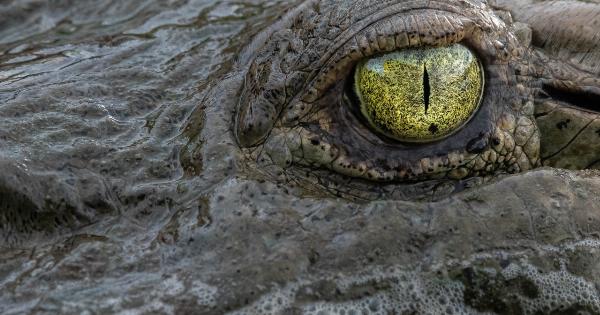There is something truly magical about a dog’s eyes – those deep, expressive pools of love and understanding. Dogs have been our loyal companions for thousands of years, and their eyes are windows to their souls.
In this article, we will explore the wonders of a dog’s eyes and uncover the secrets that lie within them.
The Anatomy of a Dog’s Eyes
Dogs have a unique set of eyes that differ from humans in many ways. Their eyes are located on the front of their heads, providing them with binocular vision.
This means that dogs have excellent depth perception, allowing them to accurately judge distances. The shape of a dog’s eyes also contributes to their superior peripheral vision, enabling them to detect movement from various angles.
One of the most distinctive features of a dog’s eyes is their prominent third eyelid, also known as the haw.
The haw serves multiple purposes, including protecting the eyes from debris, distributing tears across the surface of the eyes, and aiding in tear production. It is not uncommon for the haw to be partially visible in dogs, especially when they are sleepy or relaxed.
Sensitivity to Light
Dogs have a different sensitivity to light compared to humans. While their eyes can’t perceive colors as vividly as ours, dogs have a remarkable ability to see in low light conditions.
This is due to a higher number of rod cells in their retinas, which are responsible for detecting light and motion. Dogs also have a reflective layer behind their retinas called the tapetum lucidum, which enhances their night vision by bouncing light back through the retina.
However, this heightened sensitivity to light can also make dogs more prone to certain eye conditions. Exposure to bright sunlight or ultraviolet (UV) rays can increase the risk of developing issues like cataracts or conjunctivitis.
Protecting their eyes with dog-specific sunglasses or limiting their time in direct sunlight can help prevent these problems.
The Power of Communication
A dog’s eyes are their primary means of non-verbal communication. Through their gazes and expressions, dogs convey a range of emotions and intentions. They can communicate joy, sadness, fear, or even a desire to play through their eyes alone.
The ability to interpret these visual cues is crucial for understanding and bonding with our canine companions.
One of the most captivating aspects of a dog’s eyes is the famous “puppy-dog eyes” look, characterized by raised eyebrows and widened eyes.
This facial expression triggers an innate response in humans, evoking feelings of empathy and protection. Scientists believe that this puppy-dog eyes expression is a result of domestication, as it resembles the facial features of human infants. It is a testament to the deep emotional connection between dogs and humans.
Eye Contact and Trust
Eye contact plays a significant role in building trust and strengthening the bond between dogs and humans. When a dog looks into our eyes, it is a sign of trust and affection.
It demonstrates their reliance on us and their willingness to connect on a deeper level. Many studies have shown that oxytocin, the “love hormone,” is released in both dogs and humans during eye contact, fostering feelings of love and attachment.
Training and socializing dogs often involve establishing and maintaining eye contact. By teaching our furry friends to focus on our eyes, we can effectively communicate commands and reinforce positive behaviors.
A mutual understanding develops through these shared glances, creating a strong foundation of trust and cooperation between dog and owner.
Health and Wellness Insights
The eyes can be a window into a dog’s overall health and well-being. Regularly observing your dog’s eyes can help detect potential issues early on, allowing for prompt veterinary care.
Signs such as redness, discharge, cloudiness, excessive tearing, or squinting may indicate various eye conditions or underlying health problems.
Certain dog breeds are more prone to specific eye conditions, such as brachycephalic breeds with their protruding eyes or large breeds with a susceptibility to progressive retinal atrophy.
Regular check-ups with a veterinarian and maintaining a proper eye-care routine are crucial to ensure the long-term health of your dog’s eyes.
Unconditional Love and Devotion
Perhaps the most enchanting aspect of a dog’s eyes is the unconditional love and unwavering devotion they express. A dog’s eyes hold no judgment, resentment, or deceit.
They are pure and honest, reflecting the profound bond they share with their human companions.
When we look into a dog’s eyes, we can see their love, loyalty, and trust. They have an incredible ability to sense our emotions and provide comfort during challenging times.
The connection we forge with our dogs through their eyes is a testament to the magic and power of these remarkable creatures.
Conclusion
The magic of a dog’s eyes is truly something extraordinary. Through their eyes, dogs communicate their emotions, build trust, and establish profound connections with us.
Understanding the anatomy, unique qualities, and health considerations of a dog’s eyes allows us to appreciate the depth of this remarkable bond.
Dogs are not just pets; they are our companions, confidants, and sources of endless love and joy.
As we gaze into their eyes, we are reminded of the immense privilege and responsibility of caring for these incredible creatures who offer us their unwavering loyalty and the magic of their enchanting eyes.





























